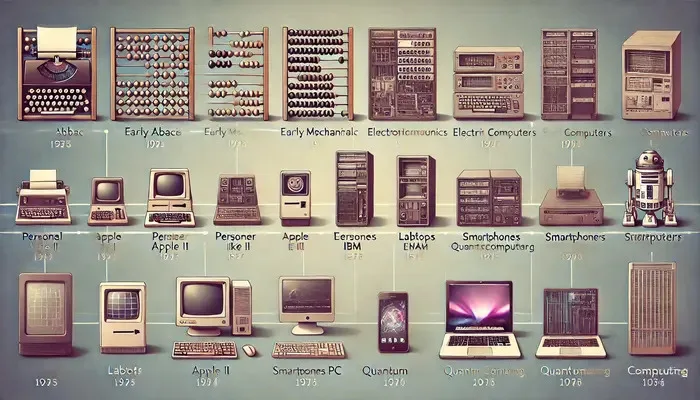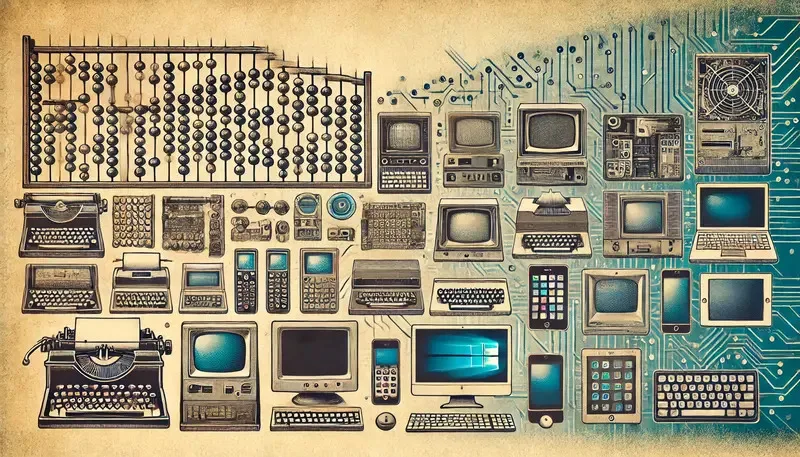
Evolution of Computer Technology
The evolution of computer technology has been a journey marked by remarkable milestones and technological breakthroughs. From the inception of mechanical computing devices to the advent of quantum computing, this evolution has transformed how we live, work, and interact with the world. This article delves into the significant stages of this evolution, highlighting the key developments and their impacts.
First Steps: Mechanical Computing Devices
The journey of computing technology began with mechanical devices designed to perform simple arithmetic operations. One of the earliest known devices is the abacus, used for centuries to aid in calculations. In the 17th century, Blaise Pascal invented the Pascaline, a mechanical calculator capable of addition and subtraction. Later, in the 19th century, Charles Babbage conceptualized the Analytical Engine, a more sophisticated device that laid the groundwork for modern computers. Although never completed in his lifetime, Babbage’s design featured components like a control unit and memory, fundamental to today’s computers.
Electronic Computing Machines (ECMs)
The dawn of the 20th century saw the transition from mechanical to electronic computing machines. The development of the vacuum tube was a pivotal moment, leading to the creation of the first electronic computers in the 1940s. ENIAC (Electronic Numerical Integrator and Computer), developed in 1945, was one of the first general-purpose electronic digital computers. It was capable of performing complex calculations at unprecedented speeds. This era also saw the introduction of binary code, which became the foundation of all subsequent computer operations.
Development of Personal Computers
The 1970s marked a significant shift with the development of personal computers (PCs). Companies like Apple and IBM revolutionized computing by making it accessible to the general public. The Apple II, released in 1977, and the IBM PC, introduced in 1981, became household names. These machines were powered by microprocessors, which drastically reduced the size and cost of computers while increasing their power and efficiency. The development of user-friendly operating systems, like Microsoft’s MS-DOS and later Windows, further accelerated the adoption of PCs.
The Emergence of Laptops and Mobile Computers
As technology advanced, the desire for portability led to the development of laptops and mobile computers. The first commercially successful laptop, the Osborne 1, was released in 1981, though it was bulky by today’s standards. Over the years, laptops became more compact and powerful, with innovations like the touchpad and wireless connectivity enhancing their usability. The 2000s saw the rise of smartphones and tablets, merging computing power with mobility and revolutionizing how we access and interact with information on the go.

The Internet and Its Impact on Computing
The advent of the Internet in the late 20th century fundamentally transformed computing. Initially developed as a network for academic and military use, the Internet rapidly expanded into a global communication platform. The creation of the World Wide Web by Tim Berners-Lee in 1989 allowed for easy access to information and the development of e-commerce, social media, and online services. The Internet also spurred the growth of cloud computing, enabling the storage and processing of data on remote servers, which has become integral to modern computing.
Development of Software
Alongside hardware advancements, software development has played a crucial role in the evolution of computer technology. Early software was often custom-written for specific machines. However, the development of programming languages like Fortran, COBOL, and later C and Java, standardized software development. The rise of open-source software, such as Linux, fostered collaboration and innovation. Modern software ranges from operating systems and productivity tools to complex applications for artificial intelligence and data analysis, driving the capabilities of hardware to new heights.
Supercomputers and Quantum Computing
The quest for greater computational power has led to the development of supercomputers and, more recently, quantum computing. Supercomputers, like those developed by Cray in the 1970s, are used for complex simulations and calculations in fields such as climate science and molecular biology. Quantum computing, still in its nascent stages, promises to revolutionize computing by leveraging the principles of quantum mechanics. Quantum computers have the potential to solve problems that are currently intractable for classical computers, opening new frontiers in science and technology.